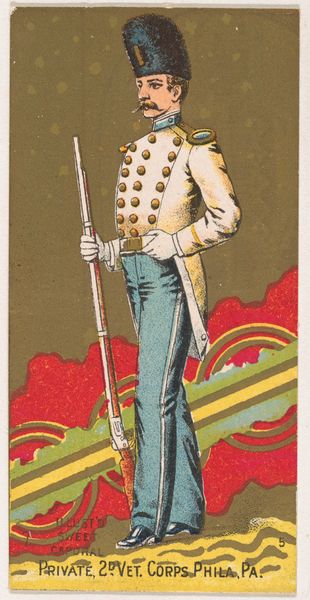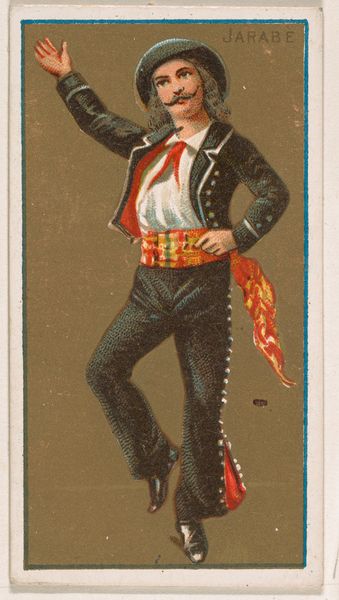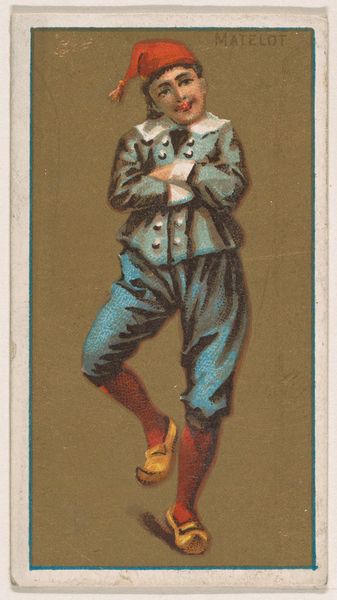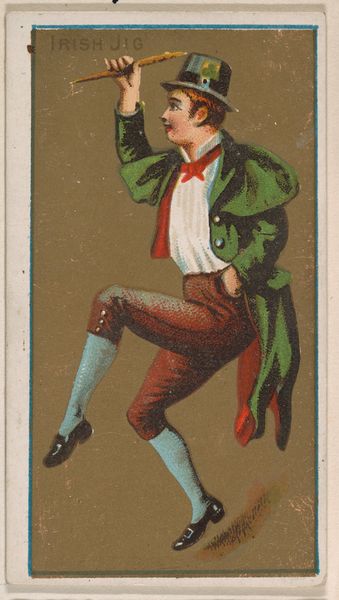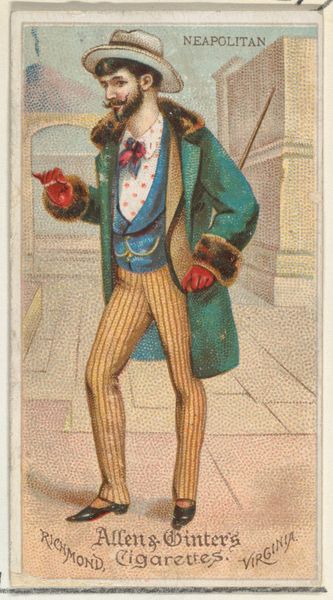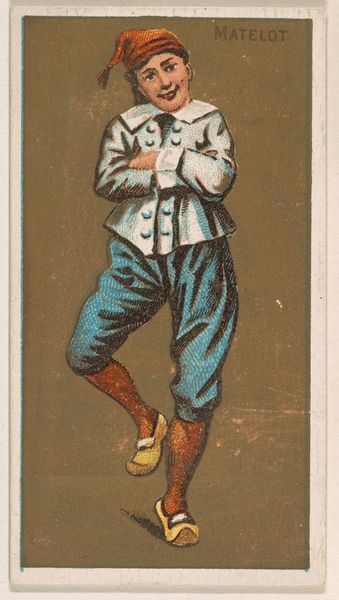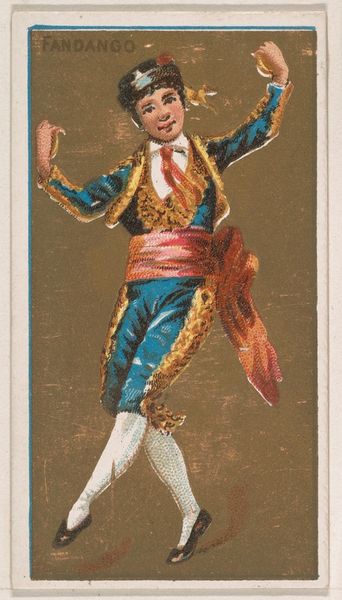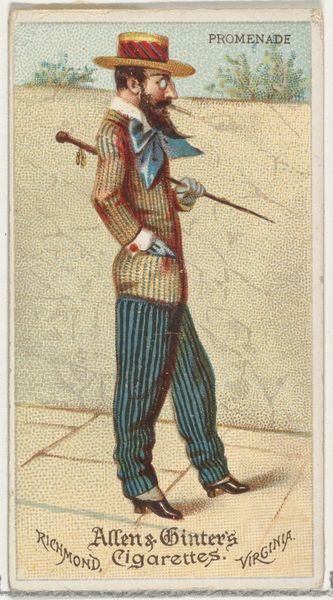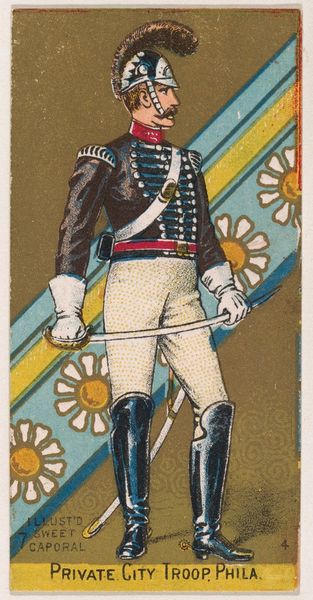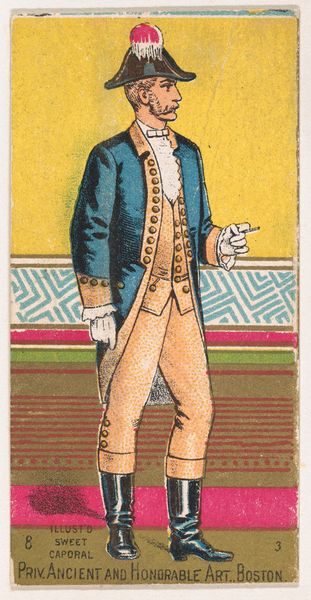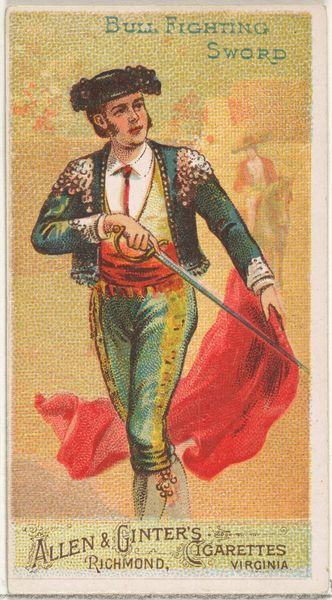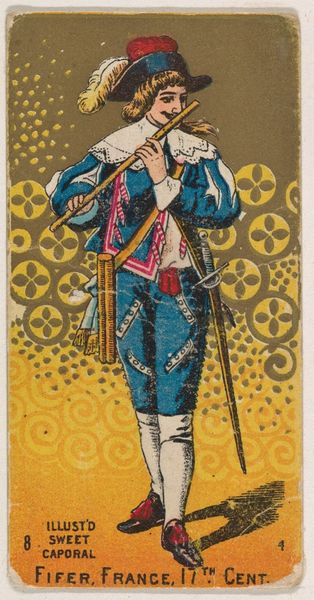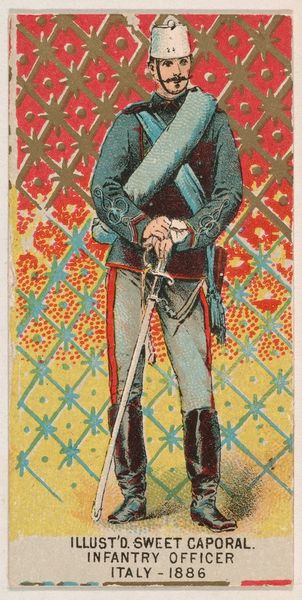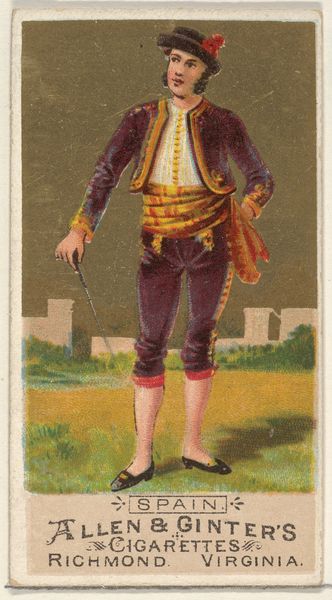
Caricatured figure / Bright's Disease, from the Jokes series (N87) for Duke brand cigarettes 1890
0:00
0:00
drawing, print
#
drawing
# print
#
caricature
#
caricature
#
watercolour illustration
#
genre-painting
Dimensions: Sheet: 2 3/4 × 1 1/2 in. (7 × 3.8 cm)
Copyright: Public Domain
This small card, "Caricatured figure/Bright's Disease," was produced by W. Duke, Sons & Co. sometime between 1870 and 1920, as part of a series of promotional cigarette cards. It is made of chromolithograph, a printing process that uses multiple layers of lithographic stones, each bearing a different color, to create a vibrant image. The card shows a caricature of a Black man, an offensive stereotype common at the time. The exaggerated features, the minstrel-like costume, and the association with "Bright's Disease," a form of kidney disease, reflect racist and prejudiced attitudes prevalent in the period. The material itself, chromolithography, is significant. It was a mass-production technique that allowed for the cheap and widespread distribution of images. The commercial context of the card, used to promote cigarettes, highlights the connections between mass culture, marketing, and the perpetuation of harmful stereotypes. The card reminds us that even seemingly simple, mass-produced objects can be powerful carriers of social and cultural meaning, reflecting the values and prejudices of their time.
Comments
No comments
Be the first to comment and join the conversation on the ultimate creative platform.
